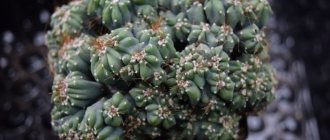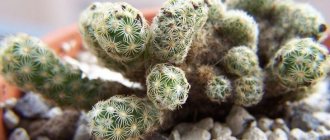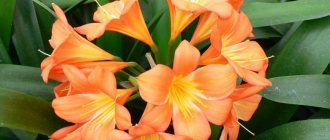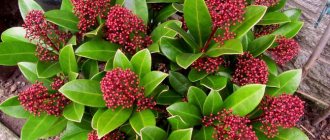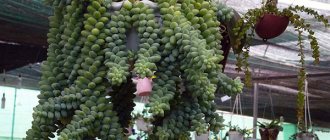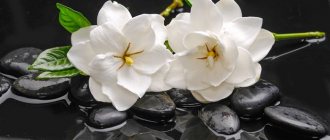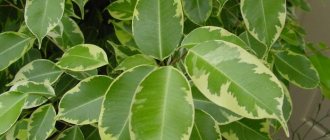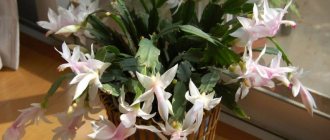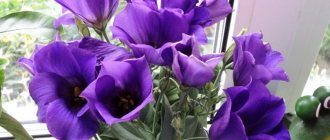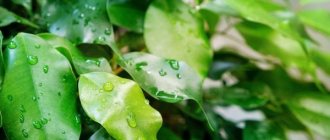Description
Geranium belongs to the perennial plants of the geranium family Pelargonium. Its origins begin in South Africa, where it is home. There are species that resemble a shrub, and there are species that resemble a herbaceous plant. At home, geranium grows no more than 1 m.
It is more common with straight stems, but there are plant species that grow as branches or creeping shoots. The leaves are wide and curly with a finger-shaped structure. Dissected leaves are considered common.
The color of the leaves is of a uniform and zonal type. In the second case, the color transition occurs from bright to darker, green color. Switching to the description of the flower, it is necessary to mention that they come in a variety of shades.
Indoor plants only lack the blue tint of flowers, but the rest are all present.
The plant produces inflorescences of different shapes. Indoor geranium flowers can be divided into two groups:
- varieties with bright and beautiful flowers;
- inexpressive colors, but fragrant and aromatic leaves.
The flowering period of Pelargonium, if the right amount of heat is maintained, can last almost a year, from spring to autumn.
Due to its composition, geranium has beneficial properties and exhibits a healing effect.
Main rules of cultivation
Growing Pelargonium at home is not at all difficult to do. In order for the bush to bloom magnificently and not gain green mass, before planting it you need to prepare a substrate of average fertility. To create drainage, expanded clay should be placed at the bottom of the pot.
Is it important to know how to water a flower? The plant needs to be watered abundantly; it is done as the top layer of soil dries. Geranium does not tolerate waterlogging of the soil. In winter, the flower is watered occasionally.
There is no need to use a sprayer to moisten the leaves, because geraniums prefer dry air. In view of this, experienced gardeners advise moving the bush to the balcony in the summer.
A houseplant consumes a large amount of light from the sun, and the sun's rays do it a lot of good, not harm. Still, on the hottest days, when the sun is at its zenith, it is worth shading the plant from active sunlight.
In the warm season, the flower feels good at almost any temperature. When winter comes, it is recommended to place the bush in a cool place with a temperature of about +15 degrees.
Determination formula
Genus:
Leaves are palmate (not pinnate) -
appearance:
palmate leaves are not pinnately divided - open flowers have divergent calyxes - petals are twice as long as the sepals (
Please note:
the spinal process on the sepal should not be included in the length of the sepal! I fell for it myself), length petals are more than 10 mm (up to 20 mm) - the leaves are angular in outline (
rounded, kidney-shaped leaves - blood-red geranium. This is written in the reference book, but in fact you can’t understand anything by the outline, a much better sign is: “Leaf lobes not linear”, because blood-red geranium has linear leaves, compare with other geraniums
) - the stem in the upper part and peduncles are covered with hairs - the flowers are blue, light purple or lilac-blue - peduncles before and after flowering are deflected down - the filaments of the stamens are expanded at the base.
Transplanting a plant
There is no need to replant geraniums often, because they are difficult to replant. For indoor care, it is recommended to replant when absolutely necessary - for example, the roots of the plant have come out of the drainage hole, the plant has become ill due to frequent watering.
The best period, which is recognized by experts for planting or replanting, is during the growing season of geranium in early spring. An important detail is that the new pot should be 2 cm larger in diameter than the previous one.
If the flowerpot is large, the green mass will actively grow, but there will be little color.
Trimming and pinching
Caring for pelargonium at home includes pruning, which is done in the fall. A separate shoot is made shorter so that 6-7 leaves remain on it.
You will need to cut out those stems that originate not from the root, but from the axils of the leaves. Even if the bush grows again during the winter, it again needs pruning, and several buds are left on the shoots.
If desired, the cut shoots can be rooted and planted in different pots. To form a more lush, branched and profusely flowering plant, you need to pinch the sprouts above the fourth and fifth leaves. Months such as December and January are very undesirable for pruning geraniums. Propagation methods
Two popular methods for propagating pelargonium are seeds and cuttings. The first method will be more difficult. You also need to take into account that when planting hybrids, future plants may not retain their maternal hereditary properties.
To plant geranium seeds, the soil is prepared at the rate of two parts turf and one part each sand and peat. Drainage is placed at the bottom of the flowerpot, and then the main, prepared soil mixture.
The seeds are taken and evenly distributed over the surface of the soil with a gap of 2 cm between each other, then they are covered with soil. Next, the soil is moistened using a sprayer. Until the seed germinates, the pot must be covered with film or glass to create a constant temperature of +20 degrees.
At this time, you need to do ventilation from time to time. Until two true leaves form, the flower should be watered periodically. After the plant is cut to 6 leaves, all shoots can be planted in different flowerpots;
Propagation by cuttings. This is an easier way. This method can be used at any time of the year. But in the spring, the emergence of roots occurs very actively and this time is more suitable for this.
The cuttings disconnected from the plant are left to lie in the air for 3 hours. Then it needs to be buried in the soil or coarse sand. It is not covered from above. After the roots have formed, it is transplanted into a flowerpot.
The following transplantation method is often used - a leaf from pelargonium is cut off and placed in water. When roots appear, the sprout is planted in a pot.
How to care for geraniums
Geranium leaves contain essential oil; to verify this, simply rub the leaf with your fingers.
The oil is released especially strongly in the summer in the sun. This way the plant is protected from overheating. They say that if geranium is planted outside, then in dry hot weather at sunset you can notice a glow above the geranium. This effect is achieved precisely by the essential oils actively secreted by the plant. Homemade geranium blooms almost throughout the year. The flowers range in color from snow-white and soft pink to purple and burgundy.
Geranium propagates by seeds and layering. Layers quickly take root in water and take root well. The pot is filled with a mixture of sand, turf and leaf humus.
Geranium is susceptible to rotting, so you need to water it carefully as the earthen clod dries out. You can simply pour water into the pan, and the plant will take it as needed.
Geraniums also need sunlight and good drainage. In all other respects, this plant is unpretentious.
Diseases and pests
Geranium has good disease resistance. She can still get sick and often this is due to improper care. Sometimes it happens that the base of the stem of a young bush turns black - this is black rot. This plant disease cannot be treated. Therefore, the affected plant is burned and the soil is changed to another.
To prevent the appearance of gray and black rot on the roots, do not let the liquid in the pot stagnate. Pests that may appear include mites, aphids and whiteflies. When aphids or mites appear on a flower, then you need to prepare an infusion of tobacco, chamomile with green soap and wipe the plant and leaves with it, including the back side.
After 3 hours, the bush should be rinsed with water. To rid geraniums of whiteflies, the following drugs are used alternately: Actellik, Confidor, Bison, Fufanon. After all, it is not easy to destroy larvae and adult whiteflies.
Plant care
Arganiq organic fertilizer is ideal
Geranium (Geranium) Geraniums, with their graceful, palmately dissected leaves on long petioles and numerous elegant flowers, can increasingly be found in gardens. The related plant pelargonium is often mistakenly called geranium.
The genus Geranium (Geranium) of the geranium family is represented by many very diverse species suitable for growing in the garden and rock garden.The plant's generic name is a Latinized version of the Greek word for crane, given for the resemblance of the long seed pod to the beak of a crane. During the period of seed ripening, the base of the seed capsule, tapering towards the end, dries out, is divided into five parts (each of them carries one seed), bursts and scatters the seeds far around. Geranium is easily propagated by seeds (they are sown for seedlings in February-March), as well as vegetatively - by dividing the bush in early spring or autumn. According to Eliza Ozheshko, Neman peasants knew all types of geraniums as rakes. Wormworm and snake are also often found among Belarusian names. There are also such names (also common for the family, without distinguishing by type): pantopalki, typersnitsa, septuplets (according to the number of segments on the leaf), amyotvetnik, male zlatnichok, zlatchysk, tsulpan lyasna. The most common species in our country are: blood-red geranium, forest geranium, meadow geranium. - Blood red geranium (Geranium sanguineum)
, or cranberry in Belarusian is called geranium kryvyana-chirvonaya (see title photo). This is a perennial plant, distributed throughout Belarus in sparse coniferous forests and among shrubs. The general range includes all of Europe, including southern Scandinavia. The thickened creeping rhizome of the crane grass has a reddish color at the break. Straight stems branch and reach a height of 40-60 cm (low-growing garden cultivars have been bred). Stem leaves are petiolate, opposite, five- or seven-palmated. In autumn, the leaves of blood-red geranium live up to their name - they turn bright red. Dahl gives the popular name for this species of geranium “wolf’s foot” - its leaves in the fall really look like the blood-stained footprint of a predator. Another name from the same source, “cross grass,” is again derived from the shape of the leaves. Blood-red geranium blooms from late May to July inclusive, with large carmine-pink flowers. The flower stays fresh for 7–12 days. In conditions of significant shading, geranium does not bloom, reproducing only vegetatively. The seeds of geraniums are located in dry “beak” boxes, characteristic of the geranium family. A plant grown from seeds blooms at the age of 10–12 years, so vegetative propagation plays a significant role in the distribution of the species. Blood-red geranium contains tannins; it was previously used for tanning leather (the maximum tannins are present in the plant during budding). It is also a dye plant that produces different colors. The herb and rhizomes of blood-red geranium are used in folk medicine. The herb is used for enterocolitis, various types of gastrointestinal disorders, and to normalize the activity of the cardiovascular system. Regarding rhizomes, there is information about their use in malignant tumors. It is impossible not to note the high decorative qualities of the abundantly flowering blood-red geranium and its flaming autumn decoration. Even wild forms of the plant provide excellent material for gardening. forest geranium - Geranium (Geranium silvaticum)
, in Belarusian geranium lyasnaya. “The Dictionary of the Living Great Russian Language” reports the following variants of the names of this plant: forest prusch, swampweed, mozgusha (this is the name of the plant in Melnikov-Pechersky), as well as hamster feeding (that is, poison). I didn’t find a word in the literature about the toxicity of forest geranium. But since people do not give names in vain, it can be assumed that where hamsters annoyed people, grass, seeds or rhizomes of forest geranium were successfully used to exterminate the animals. Forest geranium is a large and very expressive perennial plant, especially decorative during the flowering period. It is found quite often under the canopy of shady forests and shrubs on well-moistened soils. The natural range covers Western and Eastern Europe, the Caucasus, and a significant part of Siberia. Forest geranium has a powerful rhizome; the height of the erect ribbed stems reaches 80 cm. The lower leaves are petiolate, the upper ones are sessile; all palmate, from seven lobes below to three above. For geraniums, a general rule applies, dictated by the rational distribution of extracted moisture: the lower leaves are larger, since it is easier for the roots to supply them with water. In addition, the upper leaf blades of a smaller area, accordingly, evaporate less water. Forest geranium flowers have five wide-open petals; pink, pink-purple or almost purple, with darker veins. They are collected at the ends of the stems into inflorescences (moreover, a pair of flowers sits on one peduncle). Forest geranium blooms for a long time - from late June to mid-August. Like all geraniums, the plant is a good honey plant. Dahl named this plant “Yegor’s Spear” for the structure of the fruit: the specific capsule with fruits is similar to a threateningly aimed weapon. The church legend about the Christ-loving warrior-serpent fighter George (Egory, Egor, Yuri - variations of the name) was very popular among the people. Since forest geranium is often found in damp areas infested with snakes, the association between the famous icon (where the mounted George tramples a reptile with a spear) and the pointed downward points of geranium pods is equally accurate and amazing. In folk medicine, forest geranium is also considered a medicinal plant. Water decoctions and herbal infusions were used in the treatment of pulmonary hemorrhages and enterocolitis. It is clear that “enterocolitis” was unknown to the popular lexicon, however, the same Dahl called this geranium “mustache grass”, and mustache, usovye, or stabbing - “a disease, a feeling as if piercing with needles, especially with inflammation of the wombs and lungs and their membranes " The same dosage forms were used to wash purulent wounds and to gargle a sore throat. An alcoholic tincture of the whole plant in drops was used to treat heart disease. Like the previous species, forest geranium is also a dye plant and contains tannins. Blue dye can be extracted from grass, and yellow dye can be obtained with appropriate mordants. meadow geranium - Meadow geranium (Geranium pratense)
, in Belarusian geranium meadow. As the species name indicates, the light-loving meadow geranium prefers to settle in unshaded areas - meadows, river banks, roadsides, forest edges. Perhaps this is the type of geranium that is most often found in Belarus, and it has a vast Eurasian range - Europe, Scandinavia, Karelia, Crimea, the Caucasus, Siberia. Meadow geranium is a perennial rhizomatous plant whose lifespan is estimated at 15–30 years. The erect branching stem reaches a meter in height; the arrangement of leaves is regular. The leaves of meadow geranium are long-petiolate, with pink stipules, palmate. The number of “fingers” on leaves of different levels decreases from bottom to top: at the bottom the leaf blades are seven-fingered, in the middle five-fingered, at the top three-fingered. The petioles of leaves and peduncles of meadow geranium are covered with glandular hairs. Flowering of this plant begins in June and lasts until mid-August. Lilac-blue flowers with a five-petal corolla (up to 2.5 cm in diameter) show off for two days and then fade, and new ones open to replace them. Flowers are pollinated by a variety of flying insects, including bees. The upper part of the stem of meadow geranium becomes sticky during this crucial period - this creates a barrier for crawling insects that are not interesting to the geranium. Meadow geranium is valued as a good honey plant with a long flowering period, producing a lot of nectar and pollen. In folk medicine, an infusion of herbs and a decoction of the rhizomes of meadow geranium are used for diarrhea, dysentery, kidney diseases (dissolves stones), rheumatism, gout, female diseases, as an analgesic, and as a hemostatic for internal and external bleeding. Decoctions and infusions of the herb were given for insomnia and epilepsy. Rinses relieved toothache. Eczema, ulcers, bleeding wounds were sprinkled with grass powder or crushed fresh leaves were applied. Scientific medicine does not use this entire range of possibilities of meadow geranium. The medicinal use of the plant is almost completely reflected in the folk names recorded by V.I. Dahlem: dressing, gastric, kamchug (kamchug, according to Dahl - “carbuncle”, “evil sore”). More synonyms from the same dictionary: roadside needle (due to the place of growth and shape of the fruit), volcana (due to the shape of the leaves, reminiscent of the footprint of an animal). Meadow geranium contains green dye and tannins, the maximum of which is found in flowers and roots. In the language of flowers, geranium means stupidity and recklessness. Pink geranium in the language of flower symbols means preference. GERANIUM CARE The soil. B For normal growth, abundant and long flowering, all geraniums need loose, drained, fertile soils. Most geraniums grow well in acidic, slightly acidic and neutral soils. But Dalmatian geranium, Jendras geranium, blood-red, ashy and Renard geranium prefer soils rich in lime, in which the pH is 8. The only thing that is important for all geraniums, except marsh geranium, is the absence of stagnant moisture. On heavy, nutrient-rich, clayey soils, knotty and meadow geraniums grow well. Slightly acidic, peaty soils are suitable for black-eyed geranium. Temperature regime. Despite the fact that most of the described geraniums are plants of the southern regions, they are quite cold-resistant. Even in severe winters, for example, the winter of 1978/79, when the temperature in Moscow dropped below 40 ° C, geraniums were not damaged. Only geraniums with overwintering leaves (blood-red geranium and red-brown geranium) experienced premature death. However, in the spring young green leaves grew, and the flowering was as abundant as usual. Geraniums bloom more abundantly in years with warm springs and hot summers. Care. In a properly created flower garden, geranium grows quickly, and its dense bushes prevent the growth of weeds. Therefore, caring for geranium plantings is quite simple. This is a thorough weeding of flower beds in May until a mass of leaves appears. At the same time, the soil is loosened and complex mineral fertilizers are scattered into it. Geranium also responds well to the addition of ash. Further care consists of watering if necessary, and after the flowers wither, you need to cut off the faded shoots. In the fall, at the end of September, above-ground shoots of geraniums with non-wintering leaves are cut off and placed in a compost heap. Geraniums with overwintering leaves cannot be pruned. Black-eyed geranium requires garter. In meadow geranium, when pruned in summer, secondary flowering is sometimes observed in the fall. Diseases and pests. occasionally damaged by brown spot and powdery mildew. To avoid powdery mildew, cut the plant after flowering or at the beginning of the wilting period. After cutting, the next shoots will be stronger. New leaves will appear that partially survive the winter. Large, bushy species can be mowed after flowering. They grow again and most often bloom a second time. In case of fungal diseases, which manifest themselves in the appearance of brown spots on the leaves, these leaves are cut off and burned. Cases of fungal diseases occur in wet, cold years and do not have a decisive effect on the condition of plants. Back to plant catalog
|
|
Mode of application:
prepare a nutrient solution by stirring 10 grams of ArganiQ (10-12 cm when squeezed) in 0.5 liters of water, and water the plants with the prepared solution as with normal watering.For best results we recommend: - When preparing the nutrient solution, use water at room temperature;
- After watering the plants, loosen the soil.
Ideal Use: - from the beginning of March to the end of October - 2 times a month;
- from November to February – once a month.
|
Photo of indoor plant Geranium
